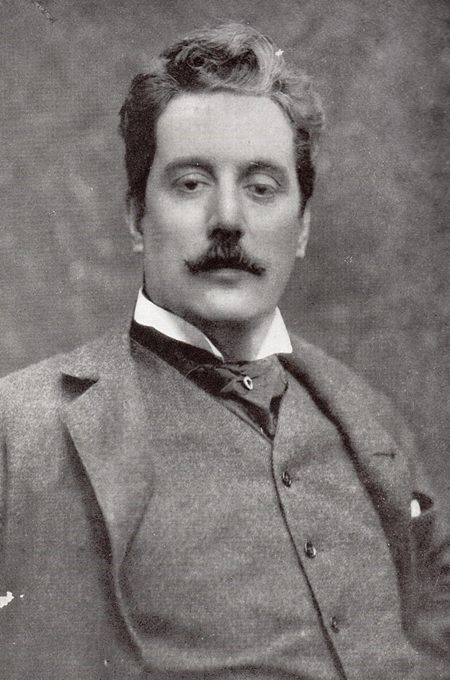
I bet if you ask anyone to give you the name of some famous opera composers, Puccini’s name will come up. Not surprising really, because he’s considered one of the most successful opera composers who ever lived and best-known for favourites like La bohème (1896), Tosca (1900), Madama Butterfly (1904) and Turandot (1924). He was born into a family of successful church musicians and given the impressive name of Giacomo Antonio Domenico Michele Secondo Maria Puccini. Naturally his family assumed that he would grow up to continue the tradition of church music and organ playing and indeed at the age of fourteen he became church organist in his home-town of Lucca. However, one day in 1876 at the age of eighteen, he walked twenty miles from Lucca to Pisa to hear a production of Verdi’s Aida. The performance must have left a powerful impression, because it was that experience that decided Puccini to pursue a career in the opera house rather than the church.
His early work is rooted in late nineteenth century romantic Italian opera. Later in his career, he became one of the leading exponents of the verismo style of opera which had its origins in literature. In early opera, the subject matter revolved around gods, mythological figures, or kings and queens but the verismo style was concerned with realism, with ordinary people and their day-to-day problems, usually of a domestic or romantic nature.
Opera is primarily a showcase for the voice and the combination of voices and instruments in the context of a dramatic visual presentation has been described as “one of the greatest of human achievements”. The centre of a great opera is the music itself which must be captivating, emotionally charged and dramatic. It has to contain fine, memorable tunes that allow the singers to express themselves through music and if the music contains a few musical surprises so much the better. Of course, a powerful and compelling story line is essential: one that wraps the audience into its plot and engages them emotionally. The drama has to make the audience feel that they can identify and empathize with the characters.
Puccini was born on 22 December and the first two acts of his opera La bohème are set on Christmas Eve. So this is an appropriate time of year to revisit this much-loved opera. The first performance of La bohème was given in Turin in 1896 and conducted by the 28-year-old Arturo Toscanini. The story is loosely based on a novel by Henri Murger, a collection of vignettes portraying young bohemians living in the Latin Quarter of Paris in the 1840s. The opera’s libretto focuses on the relationship between the poet Rodolfo and the seamstress Mimì.
This splendid Salzburg Festival production has updated the plot to present-day Paris and the performance is given by a strong cast of brilliant singers who are also competent actors. There are some wonderful ensemble pieces too, particularly the quartet at the end of Act Three. Few people will remain unmoved by Puccini’s rapturous music and his heart-tugging melodies. The video has English subtitles but you can find a detailed synopsis at Wikipedia. Put two hours aside one evening to wallow in this musical feast. Just make sure you have a box of tissues handy.
Puccini’s brilliant operatic career pushed much of his other work into the shade. He composed the Mass as his graduation exercise from the Pacini School of Music in Lucca and it was first performed in Lucca in 1880. Puccini had started work on the mass two years earlier and it’s hard to believe this colourful composition is the work of an eighteen-year-old. It’s scored for choir, orchestra, tenor, bass and baritone soloists. Although it was evidently well received at the time, Puccini never published it and the music was eventually forgotten. It was rediscovered in the late 1940s and published in 1951. It’s now an established part of the choral repertoire.
The mass is set in the usual four sections; Kyrie, Gloria, Sanctus and Benedictus, and finally the Agnus Dei. It’s fascinating music because it clearly owes much to Verdi. It’s thoroughly operatic in style and shows Puccini’s flair for orchestration and his brilliant use of voices. The Gloria takes up nearly half the entire mass and includes a rousing opera-style march (19.09) which could have come from the hand of Verdi himself. But just wait for the Agnus Dei (45:28) which shows Puccini’s gift for delightful musical surprises.
To watch these YouTube videos, either use your Smartphone to read the QR codes or go to this article online, click on the “live” links and go direct to the videos. If you have a laptop, sound quality can be improved significantly by using headphones or external speakers.
 |
 |
 |





